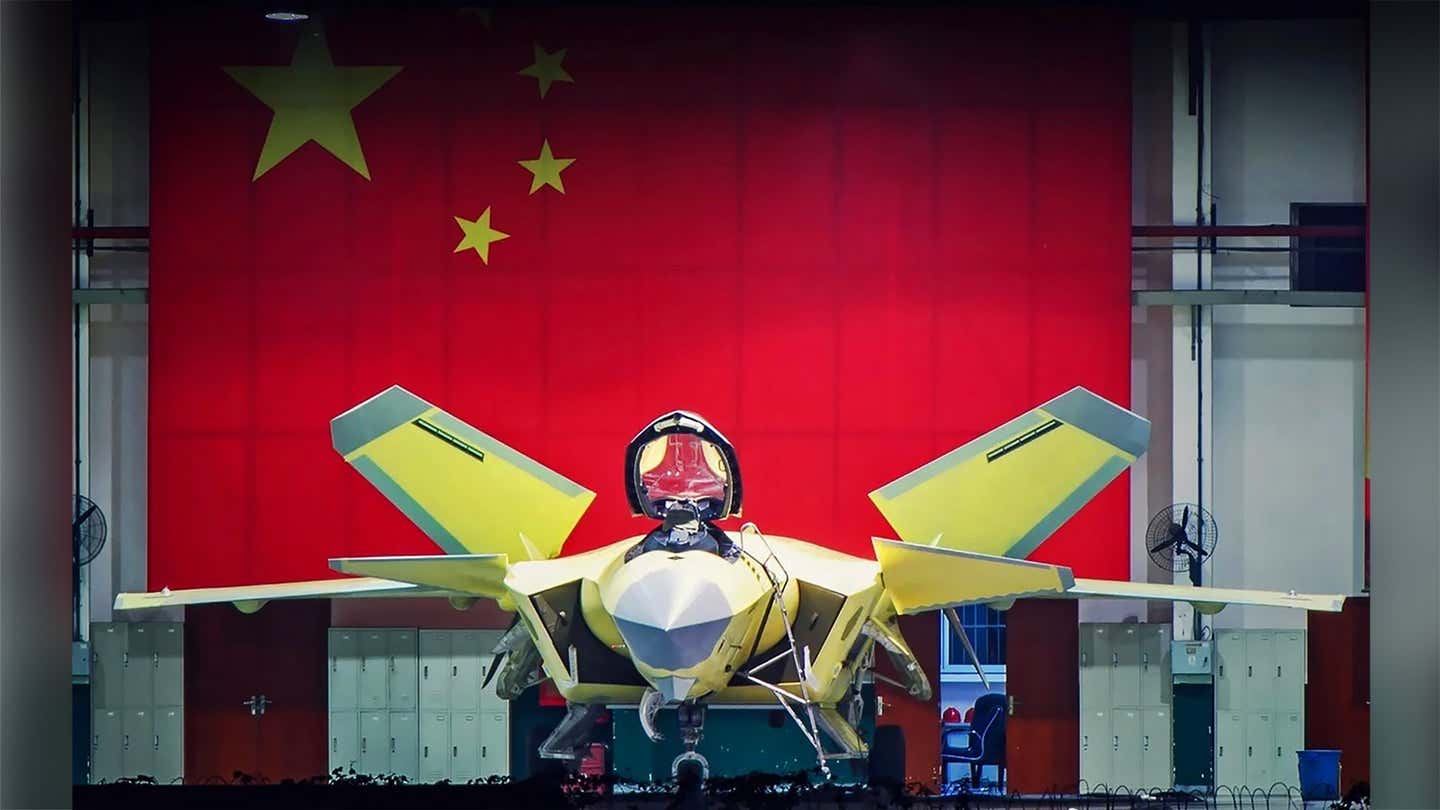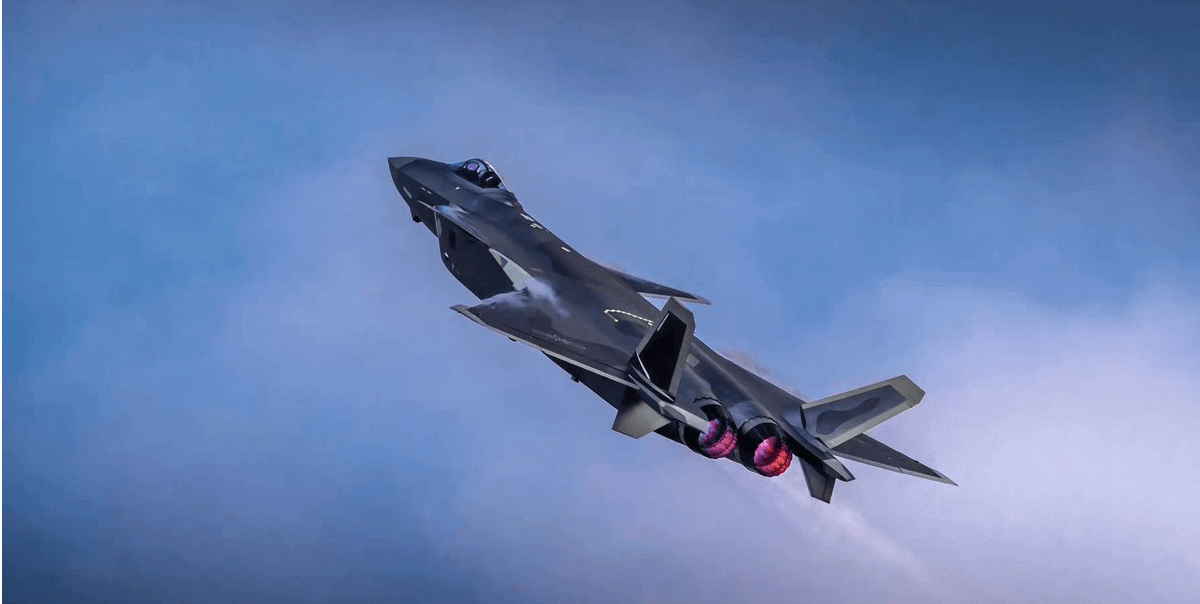China’s Chengdu J-20 Mighty Dragon jet is the most significant production of Chinese military technology, which has grown at an unprecedented pace over the last decade. China is only the third country in the world after the US and Russia to develop a fifth-generation combat stealth aircraft.
As tensions soared with the US over Nancy Pelosi’s visit to Taiwan, China commenced joint military exercises surrounding Taiwan, featuring J-20 stealth fighters for the very first time, Chinese media reported.
China released a video released showing J-20 stealth fighter jets participating in the military drills. The stealth jets flew from an airfield on Tuesday, with Beijing deploying rockets and missiles to thwart Pelosi’s visit.
Gu Zhong, deputy chief of staff of the PLA Eastern Theater Command, said the military drills involved missions like a joint blockade, sea assault, land attack, and air superiority, and live-fire shooting of precision weapons.
Meanwhile, China sent 27 warplanes to the air defense zone of Taiwan, the island’s Defense Ministry said. The ministry added that six J-11 fighters, five J-16 fighters, and 16 SU-30 jets entered the air defense zone.
J-20 Stealth Fighters
This Chinese jet, touted as a challenger to American F-35 and F-22 Raptors, was first inducted into service in 2017.
Its maiden flight was conducted more than a decade ago, and it would not be an exaggeration to say that the J-20’s journey from development to deployment has been challenging.
The J-20 was built and upgrades introduced in record time when compared with its western rival, the F-35. The US chose a protracted waterfall development and testing strategy and a model of trying long-term predictive requirements for the F-35, whereas China preferred iterative techniques.
After the J-20’s first flight in 2011, China came up with nine visually significant upgrades within five years. Even as mission systems were being modified by March 2017, the first operational J-20 was deployed to a front-line unit ahead of schedule.
However, the aircraft ran into rough weather before it was deployed.
According to the manufacturer of the J-20, the Aviation Industry Corporation of China (AVIC), China’s most advanced stealth fighter J-20 narrowly missed a “severe accident” in a test flight several years ago during the early stages of the aircraft’s development.
The incident reportedly happened on December 18, 2012, as one aircraft was taxiing on a runway at high speed. Only three minutes into the test, the cockpit panel readings were green, but suddenly the ground data sensors sounded a caution, prompting ground control to request an emergency test abort.
“According to retro analysis, had the order been two to three minutes later, a major accident could have occurred,” Avic said on its social media account in January 2022 to mark the 11th anniversary of the aircraft’s maiden flight.

The J-20 has come a long way since the reported incident. The Chinese aircraft, widely active in the Indo-Pacific region, met the American fifth-generation stealth fighter F-35 over the East China Sea. The incident was revealed by Pacific Commander General Kenneth Wilsbach, who was pretty impressed by the J-20 Mighty Dragon.
At the time of admitting the encounter, General Kenneth Wilsbach said, “We’re seeing relatively professional flying, and it’s still too early to tell exactly what they intend to do with [the J-20] – whether it’s going to be more like an F-35 that’s capable of doing many, many missions or more like an F-22 that is primarily an air superiority fighter that has an air-to-ground capability.”
In April, the Chinese military started deploying the J-20 in contentious areas of the East and South China Seas, demonstrating its confidence in the aircraft’s entire range of operational capabilities.
The aircraft’s stealth capabilities are at par with American fifth-generation fighter fighters, according to Chinese experts. Its fuselage, engine intake, and exhaust nozzle are identical to the F-22 and F-35.
It is capable of beyond visual range (BVR) engagements, which means it could lock on to an enemy aircraft, launch a missile from a hundred miles away, and then depart the area of conflict.
However, leapfrogging to this level of technological advancement and operational capability has been accompanied by a fair share of struggles. Just one year before it was inducted into service, the J-20 ran into some very severe faults.
J-20 Incident
On January 11, 2011, the J-20 made its unannounced maiden flight the same day that Robert Gates, the US secretary of defense, met Hu Jintao, the Chinese president in Beijing. Hu informed Gates that the timing was just a mere coincidence.
The maiden flight launch of the J-20 came just six years after introducing the fourth-generation Chengdu J-10 fighter into the Chinese service. The ability of China to deliver a stealth aircraft with supersonic cruise capability, super maneuverability, and super avionics so fast astounded many observers.
The flight’s pilot, Li Gang, later received the Gold Medal of Honour for Meritorious Pilots, one of the highest honors in the PLA Air Force.
However, just a year before the first J-20 was inducted into service in 2017, another incident with the stealth fighter jet gave the PLA Air Force a massive headache.

A major J-20 plane fault was reported during a test flight on May 17, 2016, Avic said. Monitoring software issued a warning during that untoward incident, and personnel on the ground helped the pilot troubleshoot the situation and safely land the aircraft.
Avic did not give details about the nature of these events, saying that during the test flights, the team also discovered “many other severe load conditions that were not expected in the design stages,” such as overloading of hinged sections of the wings and uncommanded uplift of the aircraft.
The aircraft went through thousands of tests and subsequent modifications, including a test in 2016 on “the world’s highest airfield for fixed-wing aircraft,” a possible reference to Daocheng Yading Airport, which is 4,411 meters (14,472 feet) above sea level.
However, the aircraft has also encountered several problems related to the engine that powers it, which has put China in the way of severe criticism, with some experts claiming that the aircraft does not even qualify to be called a fifth-generation fighter jet due to its archaic and faulty engine.
J-20 Engine Woes
While it is evident that the J-20 represents tremendous improvements for the Chinese military, there are also considerable downsides.
The most contentious part of the aircraft continues to be the jet engines. When Russian engines started to function poorly, the People’s Liberation Army resorted to indigenous production. However, it is unknown how well the production is running.
China has labored for years to create a homegrown engine for the J-20. The aircraft entered mass production when the domestically made WS-10 engine successfully replaced the archaic Russian AL-31 engine.
Nevertheless, China’s engine woes have continued unabated. In February 2022, it was revealed that the aircraft’s aspiration to host Directed Energy Weapons (DEWs) had run into trouble owing to its underpowered engines. Questions have also been raised on China’s ability to produce purpose-built engines on a war footing.
Official media in #China have confirmed that all jet fighters in the Chinese air force are now equipped with Chinese made jet engines
The WS-10 engine series are used on the J-11B, J-10C and J-20
The WS-20 high bypass turbofan engine have also been confirmed to be used on Y-20 pic.twitter.com/f2kzODcfPb
— Zhao Dashuai 无条件爱国 ?? (@obsidianstatue1) March 14, 2022
Additionally, numerous reports have claimed that the WS-10 indigenous engines are still falling short and do not provide enough thrust compared to the Russian ones.
China is still developing the WS-15 engine to power the J-20’s “super cruise” capability. The WS-15, which appears to feature a low bypass ratio and thrust vector control, has not yet successfully passed the critical testing.
Despite China’s mammoth technological breakthroughs, the rival F-35 is believed to be powered by an engine that is several times better than China’s homegrown engines powering the J-20.
The American XA100 engine that drives the F-35 is still at least ten years ahead of the WS-15, claimed an analyst from the Yuan Wang military think tank in Beijing quoted by 1949.
The depth of the Mighty Dragon’s avionics suite and electronic capabilities is unknown. Yet, it is alleged by the US that the technology was ‘stolen’ from the US’s Joint Strike Fighter (JSF) program to enhance the Chinese fighter jet capabilities.
However, despite the roadblocks, the J-20 has emerged as a strong challenger to the US power in the Indo-Pacific region, so much so that the US recently a fighter aggressor unit that would replicate the Chinese fifth-gen fighter jets.
- Contact the author at sakshi.tiwari9555@gmail.com
- Follow EurAsian Times on Google News




